Kho Muong Village, located in Thanh Son Commune, Ba Thuoc District, Thanh Hoa Province, is nestled in a valley surrounded by towering mountains. This remote Thai ethnic village, part of the Pù Luông Nature Reserve’s core zone, has emerged as an alluring destination for tourists seeking exploration and experience.
A Thai village hidden in a valley
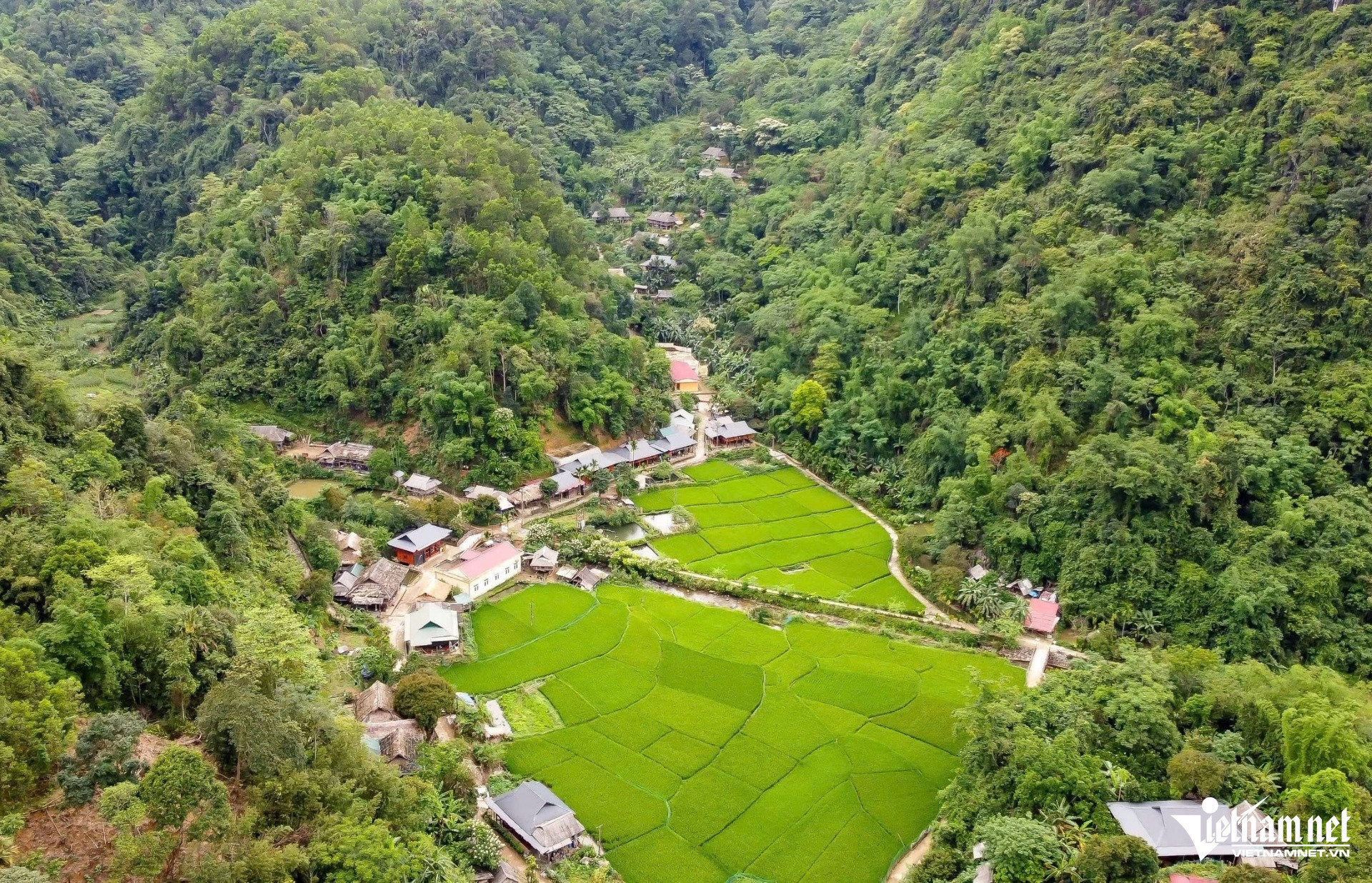
Kho Muong Village lies secluded in a mountain valley.
Kho Muong is more than 150 kilometers from Thanh Hoa City. Inhabited by the Thai ethnic group, it lies deep within the heart of the Pu Luong Nature Reserve and is isolated from surrounding communities.
According to locals, “Kho” means origin, and “Muong” means village. Over 300 years ago, early settlers discovered the valley’s flat terrain and abundant stream-fed water supply, prompting them to clear land, cultivate crops, and build the village.
The route into Kho Muong winds along precarious mountain slopes, flanked on one side by steep cliffs and on the other by deep ravines. This challenging journey appeals to adventure seekers.
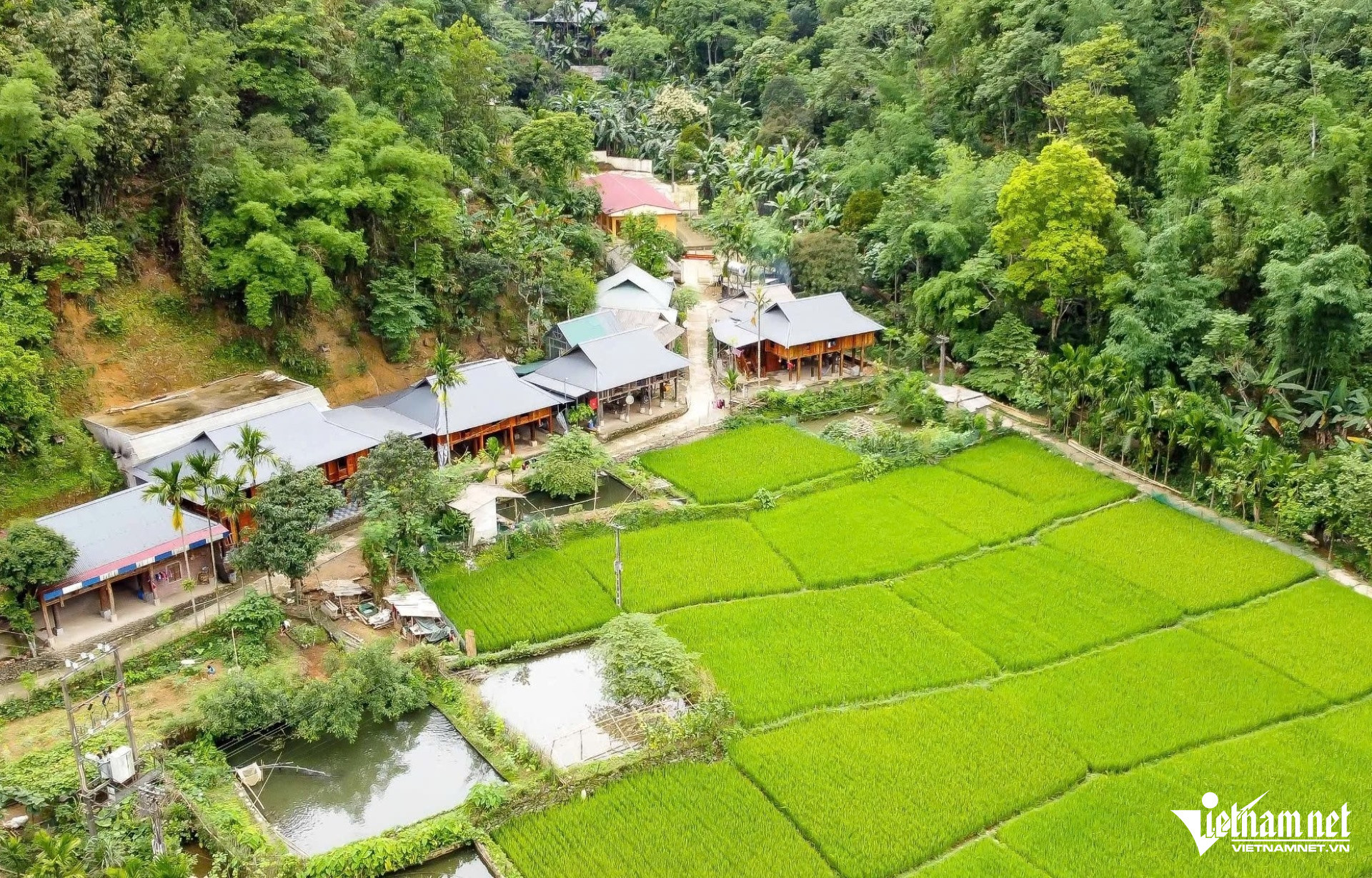
Well-maintained stilt houses of the local Thai community.
From above, Kho Muong reveals a raw and tranquil beauty with traditional stilt houses nestled at the foot of mountains, adjacent to rice fields, maize plots, and cassava farms. Lush, ancient forests encircle the village in an expanse of verdant green.
Visitors to Kho Muong enjoy a refreshing escape into pure, cool air, far removed from urban hustle. Guests are treated to local dishes and cultural performances by the Thai community.
Tourists also have the chance to explore Kho Muong Cave (also known as Bat Cave), a 2.5-kilometer-long grotto adorned with intriguing stalactite formations.
Developing community-based tourism
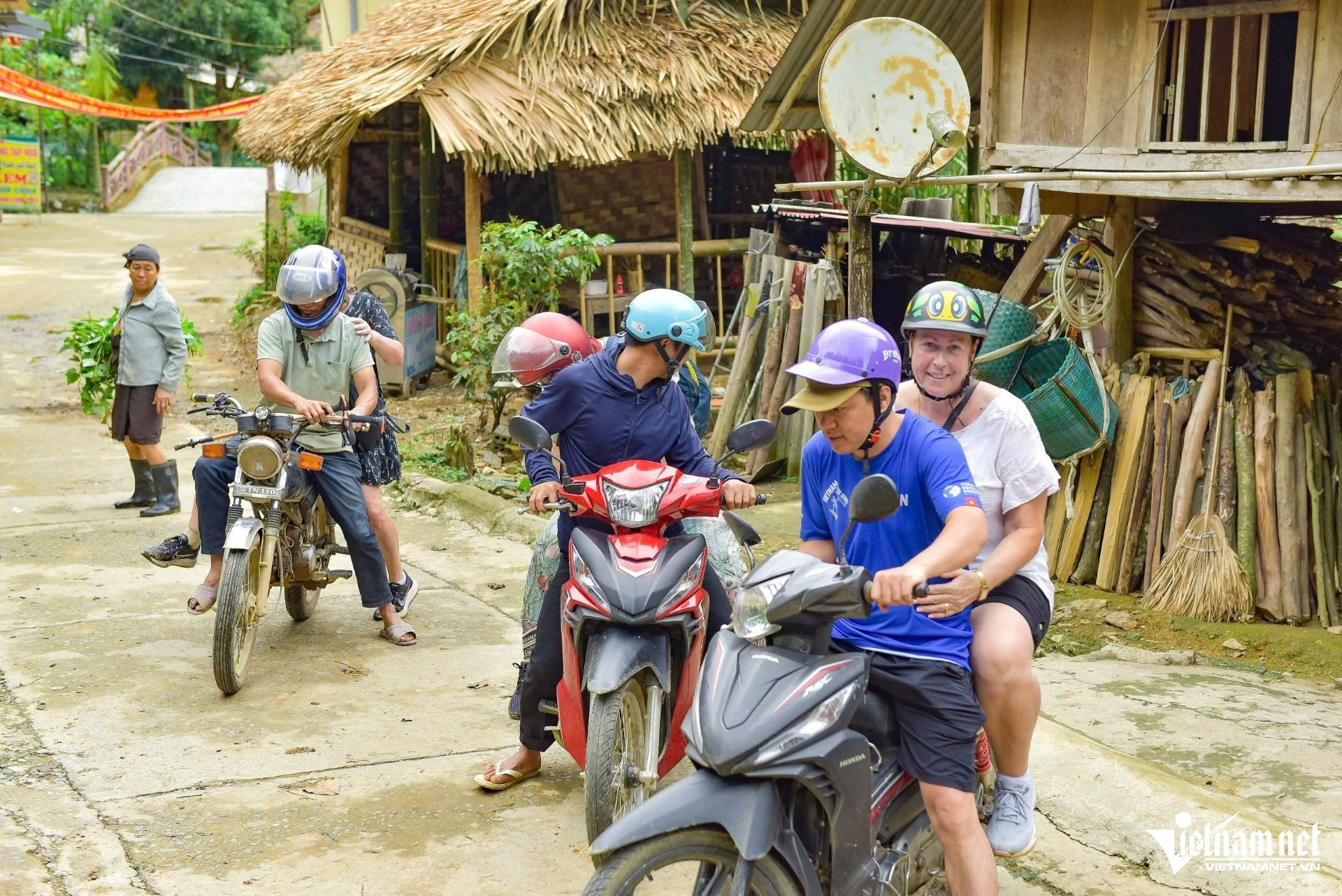
Visitors to Kho Muong enjoy hands-on experiences.
In recent years, several households in Kho Muong have received training and support to build facilities catering to both domestic and international travelers.
Ha Dinh Nech, 74, a homestay operator in the village, recalled that many locals previously migrated south for work. About a decade ago, realizing the area’s pristine beauty was ideal for tourism, families began registering for community-based tourism projects and sought experience from other locales.
Families were trained in basic English to engage with foreign visitors and taught standard cooking techniques to serve guests.
Village head Ha Van Thao shared that Kho Muong comprises 62 households, all of Thai ethnicity. The village has preserved its traditional stilt houses and unique cultural traits, prompting a push in recent years to develop eco-tourism.
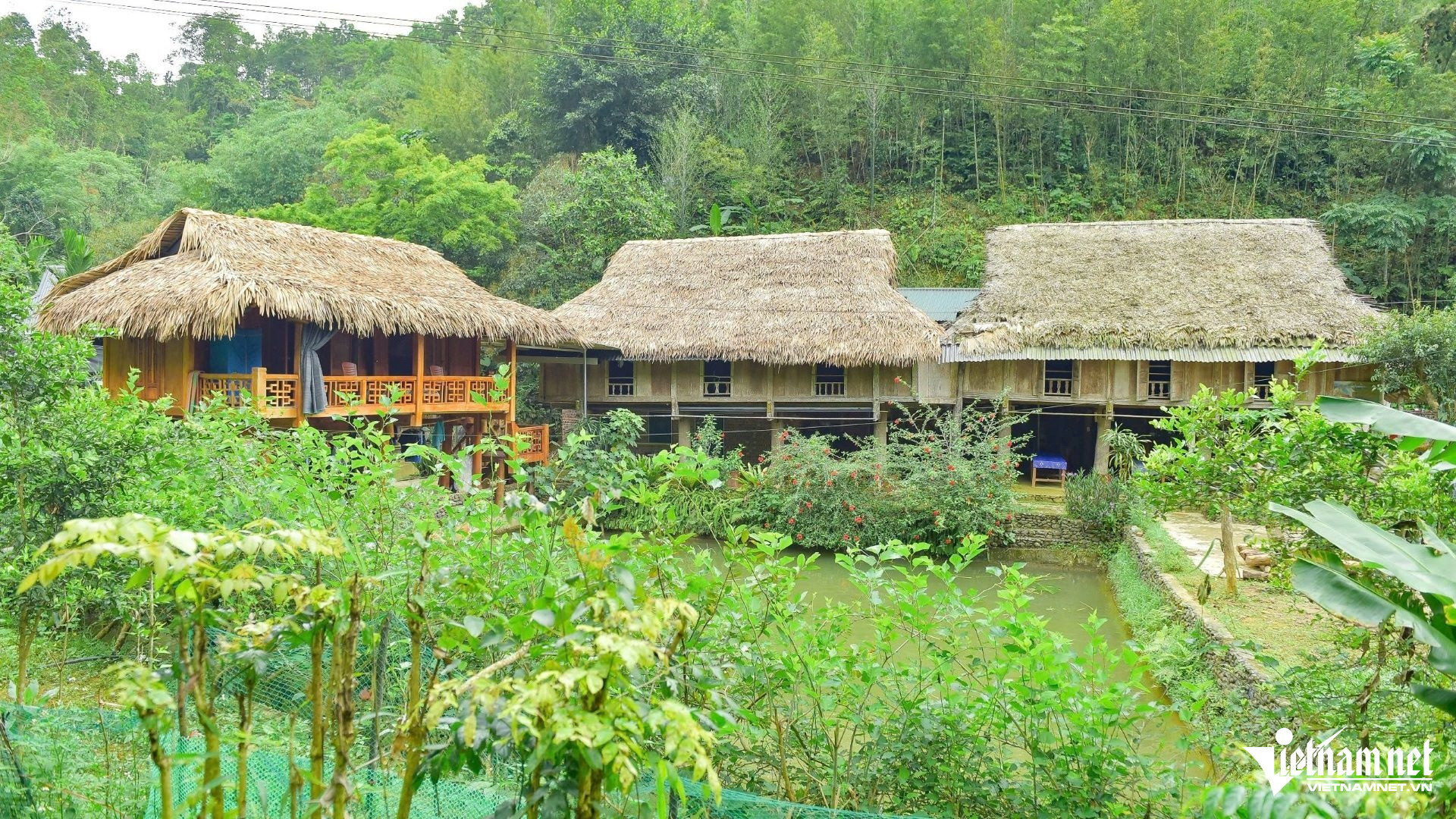
Community-based tourism is growing in Kho Muong.
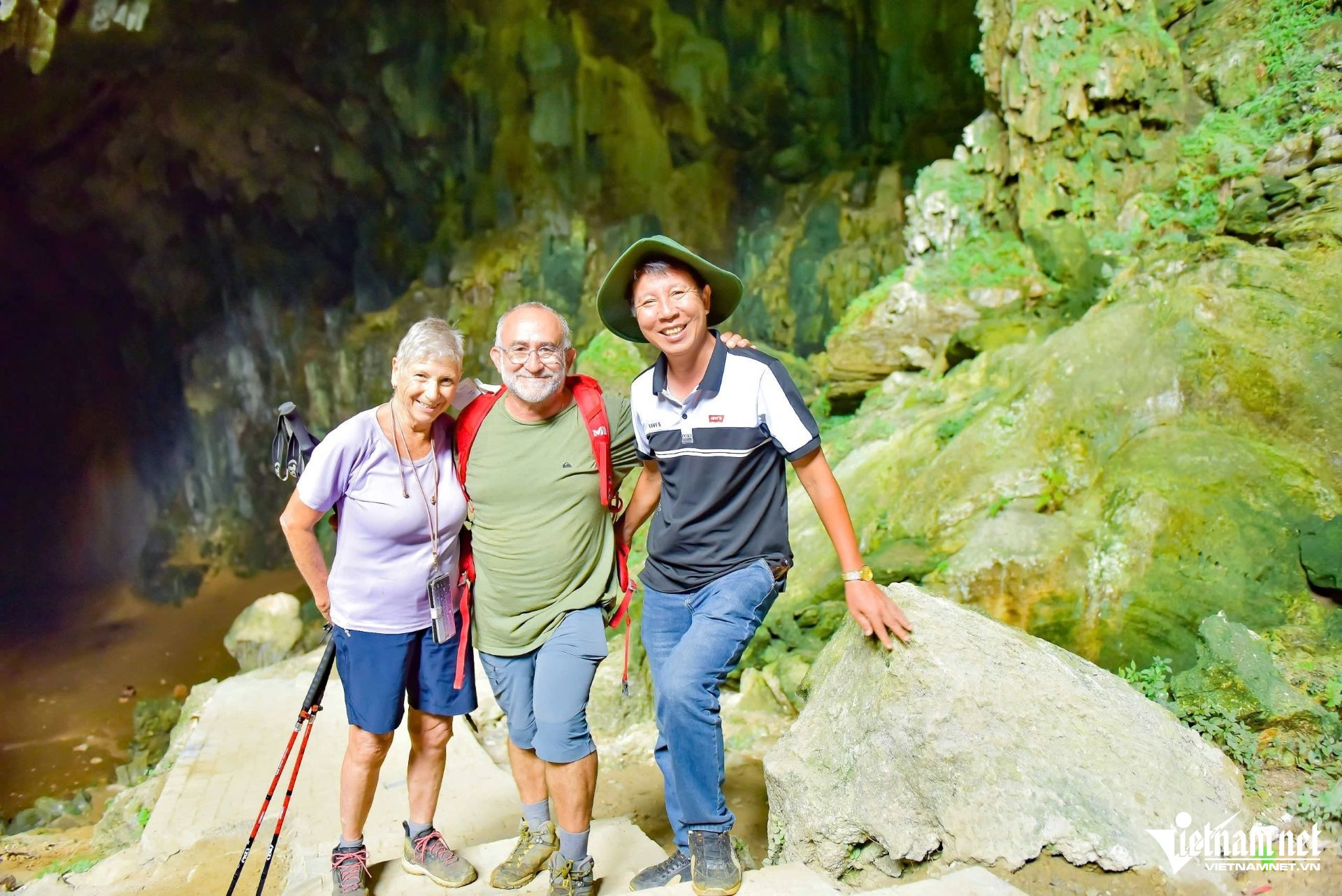
“Community-based tourism is helping locals eradicate poverty, boost income, improve living standards, and preserve the Thai ethnic identity,” said Thao.
As a result, many families have invested in accommodations to welcome tourists. “Tourism has created stable jobs for dozens of locals, earning them around $160 to $200 per month through services like motorcycle transport, homestay work, and tour guiding,” Thao added.
Currently, nearly 10 households are active in community-based tourism, with others upgrading homes to accommodate more guests.
Tran Nghi - Le Duong